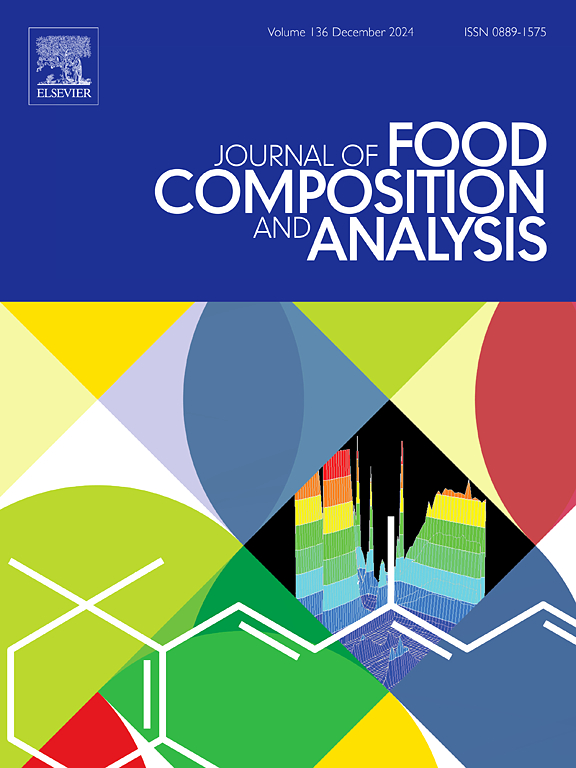Genotype and genotype by environment interaction (GGE) biplot analysis for assessing genotype stability in grain iron and zinc content of maize across diverse environments
IF 4
2区 农林科学
Q2 CHEMISTRY, APPLIED
引用次数: 0
Abstract
The bio-fortification of maize presents a promising approach for improving nutritional security. Considering iron and zinc deficiencies as significant global public health challenges, the present study included the multi-location evaluation of maize elite inbred lines (300) and hybrids (31) to see variability for iron and zinc content, quantify the genotypes-by-environment (GEI) interaction, and identify stable genotypes with high Fe and Zn content. The findings demonstrated significant GEI for both Fe and Zn, indicating diversity among genotypes and environments under study. Environmental effects were higher for Fe than on Zn. Ideal genotypes for Fe included hybrids H21 and H27, along with inbred G107 and G114. For Zn content, H27 and inbred G3, G178, and G9 emerged as the best genotypes. The analysis unveiled multiple mega-environments for Fe and Zn content, suggesting genotype adaptation to specific environmental conditions. These promising genotypes identified can be of great potential in breeding for high Fe and Zn in maize. Understanding the specific genetic and physiological mechanisms underlying the performance of hybrids and inbred lines with high as well as stable Fe and Zn content and winning genotypes within each mega-environment are crucial for targeted breeding strategies.
求助全文
约1分钟内获得全文
求助全文
来源期刊

Journal of Food Composition and Analysis
工程技术-食品科技
CiteScore
6.20
自引率
11.60%
发文量
601
审稿时长
53 days
期刊介绍:
The Journal of Food Composition and Analysis publishes manuscripts on scientific aspects of data on the chemical composition of human foods, with particular emphasis on actual data on composition of foods; analytical methods; studies on the manipulation, storage, distribution and use of food composition data; and studies on the statistics, use and distribution of such data and data systems. The Journal''s basis is nutrient composition, with increasing emphasis on bioactive non-nutrient and anti-nutrient components. Papers must provide sufficient description of the food samples, analytical methods, quality control procedures and statistical treatments of the data to permit the end users of the food composition data to evaluate the appropriateness of such data in their projects.
The Journal does not publish papers on: microbiological compounds; sensory quality; aromatics/volatiles in food and wine; essential oils; organoleptic characteristics of food; physical properties; or clinical papers and pharmacology-related papers.
 求助内容:
求助内容: 应助结果提醒方式:
应助结果提醒方式:


